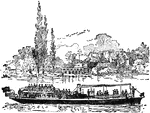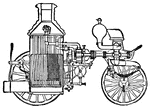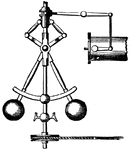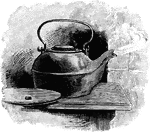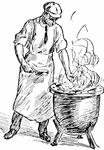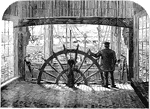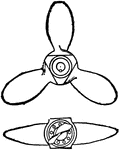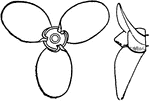
Aeolipile
"An instrument illustrating the expansive force of steam generated in a closed vessel, and escaping…

Air-engine
"A motor employing the elastic force of air expanded by heat, or air compressed by means of another…
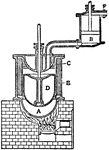
Stirling's Air Engine
"A form of air-engine which was invented in 1816 by the Rev. R. Stirling is of special interest as embodying…
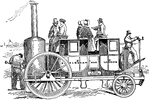
A Precursor of the Automobile
One of the earliest models of the automobile, which was steam-powered.

Barge with Diving Bell
"Sectional view of diving bell and barge, employed on the River Clyde. All the appliances are worked…
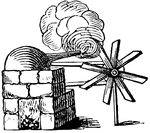
Brancas Engine
"In 1629 Giovanni Branca, an Italian, contrived a machine which was employed for the various purposes…

Cartoon of Man, Cat, and Tea Kettle
A cartoon of a man holding an envelope in one hand and a steaming tea kettle in the other hand. A cat…
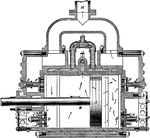
Air Compressor
"For many purposes compressed air is preferable to steam or other gas for use as a motive power. In…

Crank
"The simplest idea of a crank is that of a handle to a wheel; its action is familiarly illustrated in…

Centrifugal Creamer
This centrifugal creamer is a machine used to separate cream through a steam power source which helps…

Double-acting Cylinder
"The first alteration to be noticed in the double-acting engine is that of the cylinder. To insure its…

Double-acting Cylinder
"The first alteration to be noticed in the double-acting engine is that of the cylinder. To insure its…

Transverse Section of a Double-Column Hammer
"A transverse section through the valve casing of a double-column hammer, used for heavy forge work."—Finley,…
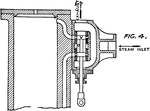
Vertical Section of a Double-Hammer Column
"A vertical section through the valve casing of a double-column hammer, used for heavy forge work."—Finley,…
Hopper Dredger
"Longitudinal section of hopper dredger, employed on the River Clyde. The vessel steams to place of…

Savery's Engine
"Handle A opens and closes valves B and G. Steam is injected through pipe S which flushes any air/water…

Steam engine
"The steam engine is a powerful device for utilizing the energy involved in the elasticity and expansive…
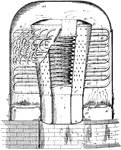
Steam Boiler Engine
This design with natural induction used for marine purposes was the popular “Scotch” marine boiler,…
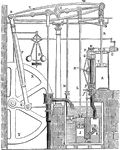
Watt's Double-Acting Condensing Steam-Engine
"Used a boiler to produce steam, chambers to condense it, and drive the pistons of the engine." —Quackenbos…
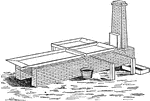
Intermittent evaporation process
"In this mode of evaporating a variety of plans and arrangements for connivence are employed. The pans…
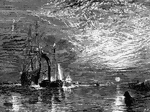
Fighting Temeraire
This painting by J. William Turner is a prime example of the style and technique that he often used.…

Steam Fire Engine
"A Fire Engine is a machine employed for throwing a jet of water for the purpose of extinguishing fires.…

Steam-engine Force Pump
"The force-pump differs from others in having its piston solid, or without a valve, and also in having…

Fowler's Anchor
"A massive square framework of wood, mounted on six sarp disc wheels, each about two feet in diameter,…

Fowler's Plough
"A framework of iron, balanced upon two large wheels. To each side of this framework there are attached…

Fowler's Steam-engine
"In 1854, Mr. Fowler exhibited his patent steam-draining apparatus at the Lincoln meeting of the Royal…
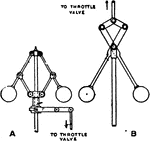
Watt's governor
"Watt's method of regulation, which consists in varying the pressure of the steam supplied to the engine…
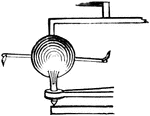
Hero's Machine
"Hero's Machine. The generation of steam from water by the application of heat, and the mechanical force…
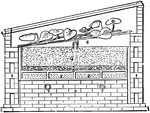
Pipe-heated hotbed
"Hotbeds may be heated by means of either steam or hot water. They can be piped from the heater in a…
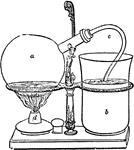
Napier's Coffee Apparatus
"This coffee apparatus consists of a glass globe a, an infusing jar b, of glass or porcelain and a bent…
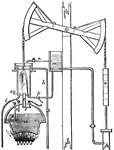
Newcomens Engine
"The simple outline of the atmospheric engine. Its mode of operation is as follows. Steam is admitted…
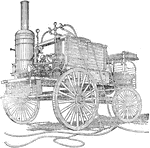
Opposite Side of Steam Spray Apparatus
Opposite side of steam spraying apparatus constructed by the Shade and Fruit Tree Protective Association…
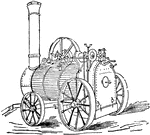
Portable Steam-Engine
A portable, external, combustion heat engine that converts steam in to mechanical work.

Water Pulsometer
"An instrument of the pump kind for raising water, especially when that liquid is mixed with solid matter.…
!["Steam pumps are force pumps operated by steam acting on the piston of a steam engine directly connected to the pump, and in many cases cast with the pump. A section of a double-acting steam pump, showing the steam and water cylinders, with other details, is illustrated [here]." —Hallock 1905](https://etc.usf.edu/clipart/36100/36172/steam_pump_36172_mth.gif)
Steam Pump
"Steam pumps are force pumps operated by steam acting on the piston of a steam engine directly connected…

Retort
"A peculiar-shaped vessel called a retort is half filled with a volatile liquid and heated; the steam,…
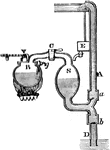
Savery Engine
"Savery's Steam Engine. The adjoining figure illustrates the apparatus employed by Savory. It consists…
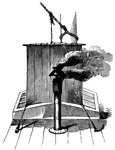
Smoke Sail
"A small sail hoisted against the foremast forward of the galley-funnel when a ship rides head to wind,…

Smoke-Jack Used for Roasting Meat
"A machine for turning a roasting-spit by means of a fly-wheel or -wheels, set in motion by the current…

